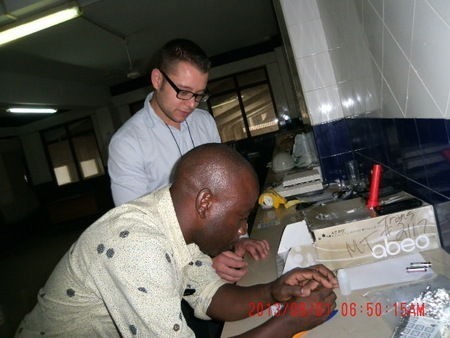Marya and I traveled to Kenya in July 2013. Traveling to labs in the developing world is necessary because this allows us to see the existing limitations and how we need to construct PADs around these limitations. For example, we encountered unreliable electricity, chemicals of questionable quality to conduct analysis, and uncontrolled laboratory conditions. Having the windows open to enjoy the beautiful Kenyan weather means that the temperature and humidity of the lab are the same as outside, and just as variable!

In Mombasa, Kenya, located on the southeast side of the country on the Indian Ocean, we visited Kensalt, a fortified salt manufacturing plant, led by Dr. Debesh Sengupta. We conducted a usability study of the saltPAD, a device I created to quantify iodine in salt. We wanted to see how it faired in the hands of a newly trained lab technician, and in this case the analyst was Mr. Richard Mbaru. Richard controls how much iodine sprays onto the salt, and he normally makes adjustments to the spray rate based on his titrimetric data. On this day, we wanted to see if the saltPAD produced the same process controls as a titration.
We trained Richard how to use the saltPAD in 15 minutes. He then analyzed many salt samples, and interpreted the color on the card. His visual analysis was in very high agreement with mine. Of the 94 reads of the PADs, 70 of them led to the same process control (turn up the spray rate, turn down the spray rate, or do nothing at all) as titration. We have identified the sources of error and are working to correct them.
Dr. Debesh Sengupta is happy with the research, wants to buy the test cards to further help us with the research, and is the first costumer for the saltPAD! This was the first time the saltPAD was exposed to a developing world setting, and I think it was a success.